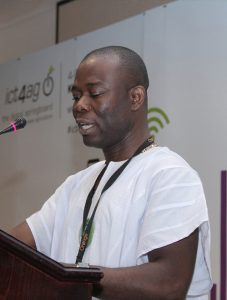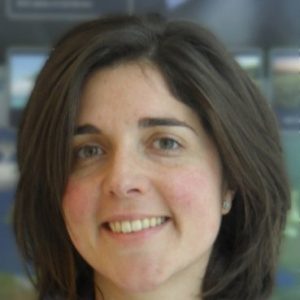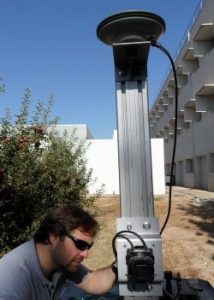ECPA Timetable
You can find here the temporary program of ECPA2019. This program is not in its final form.
There will also be workshops to be added to this program.
A more detailed program will be available soon.

Monday 8 Jul 2019
08:00 - 10:00 Registration
Registration
Organizing CommitteeMontpellier SupAgro Hall d'Honneur
The welcome will start at 8am.
09:00 - 10:20 Opening Session
Linking Remote Sensing with physical modelling of vegetation to characterize vegetation status and development: methods, challenges and perspectives
Jean-Baptiste FéretLamour Auditorium
Physical modeling plays an important role in precision agriculture and vegetation monitoring based on remote sensing. The increasing capacity to account for both structural and biochemical properties into improved modeling tools now broadens the potential of operational applications beyond homogeneous crop surfaces, and brings new perspectives for fine scale monitoring, such as close range remote sensing for disease detection, and explicit 3D representation of heterogeneous vegetation covers. This presentation will introduce recent advances in physical modeling of vegetation, its integration into current remote sensing data sources (such as Sentinel-2 data and UAVs), and the combination with field information collected with complementary sensor systems.

10:50 - 12:50
Crop Model Applications and Precision Pasture
Roger Sylvester-BradleyAuditorium 206
10:50
Integrating geospatial tools and a crop simulation model to understand spatial and temporal variability of cereals in Scotland
Presented by Cammarano, D.
11:10
Extending the use of CERES-Beet model to simulate leaf disease in sugar beet
Presented by Memic, E.
11:30
Using the WOFOST crop growth model to assess within-field yield variability
Presented by Mimic, G.
11:50
Long-term evaluation of the Grassmaster II probe to estimate productivity of pastures
Presented by Serrano, J.
12:10
Delineation of management zones in an agrosylvopastoral ecosystem based on the Rasch model
Presented by Moral, F.J.
12:30
Proximal versus remote sensing to monitoring pasture quality in Mediterranean montado ecosystem
Presented by Serrano, J.
Proximal Sensing - Image Analysis
Victor AlchanatiAuditorium 208
10:50
Species distribution mapping of grass clover leys using images for targeted nitrogen fertilization
Presented by Skovsen, S.
11:10
Accurate segmentation of grass-sward structures in RGB images using machine learning algorithms
Presented by Rueda-Ayala, V.P.
11:30
Identifying the Fusarium spp. infestation in winter wheat based on RGB imaginary
Presented by Peteinatos, G.G.
11:50
Deep learning for in-field image-based grapevine downy mildew identification
Presented by Boulent, J.
12:10
On-board colour imaging for the detection of downy mildew
Presented by Abdelghafour, F.
Satellite Applications - Irrigation
Gonzaga SantestebanAuditorium Lamour
10:50
Cost-effectiveness and performance of optical satellites constellation for Precision Agriculture
Presented by Sartori, L.
11:10
Accuracy of crop coefficient estimation methods based on satellite imagery
Presented by Beeri, O.
11:30
Estimating cotton water requirements using Sentinel-2: model development and validation
Presented by Rozenstein, O.
11:50
Assessing spatial and temporal variability in evapotranspiration for olive orchards in Tunisia using satellite remote sensing
Presented by Mulla, D.J.
12:10
Can time series of multispectral satellite images be used to estimate stem water potential in vineyards?
Presented by Cohen, Y.
12:30
Assessing infield temporal and spatial variability of leaf water potential using satellite imagery and meteorological data
Presented by Beeri, O.
14:00 - 15:40 Session 2
Nitrogen Sensing
Raj KhoslaAuditorium Lamour
14:00
Optimizing durum wheat cultivation in Northern Italy: assessing proximal and remote sensing derived from different platforms for variable-rate application of nitrogen
Presented by Moretto, J.
14:20
Vegetation indices from remote sensing imagery as proxies for yield and grain N in wheat
Presented by Quemada, M.
14:40
Assessing sampling strategies and soil sensors performance in the detection of field scale variability of plant-available nitrogen
Presented by Gebbers, R.
15:00
Near-real time winter wheat N uptake from a combination of proximal and remote optical measurements: how to refine Sentinel-2 satellite images for use in a precision agriculture decision support system
Presented by Wolters, S.
15:20
Interaction between soil variability and maize nitrogen status assessment from Sentinel-2
Presented by Crema, A.
Precision Weed Management
Manuel Perez-RuizAuditorium 208
14:00
Overfitting a convolutional neural network to support annotations of weeds
Presented by Dyrmann, M.
14:20
Preliminary study for weed biomass prediction combining visible images with a plant-growth model
Presented by Gée, C.
14:40
Marrying futuristic weed mapping with current herbicide sprayer capacities
Presented by Somerville, G.J.
15:00
Implications of dose-response relationships of herbicide droplet applications for leaf-specific weed control in leeks
Presented by Koukiasas, N.
15:20
Use of simulations to study herbicide site specific spraying
Presetend by Villette, S.
Satellite Applications - Yield
Francelino RodriguesAuditorium 206
14:00
Sentinel-2 vegetation indices and apparent electrical conductivity to predict barley (Hordeum vulgare L.) yield
Presented by Martínez-Casasnovas, J.A.
14:20
Satellite-based detection of sowing dates in field crops
Presented by Sadeh, Y.S.
14:40
A cotton yield estimation model based on agrometeorological and high resolution remote sensing data
Presented by Karantzalos, K.
15:00
Satellite based modelling of protein content in winter wheat and malting barley
Presented by Borjesson, T.
15:20
Adopting precision agriculture to improve the cultivation of old wheat varieties in Tuscany (Italy)
Presented by Fabbri, C.
Yield variation and gaps
Davide CammaranoRoom 104
14:00
Assessing the spatial variability of winter wheat yield in large-scale paddy fields of Japan using structural equation modelling
Presented by Tanaka, T.S.T.
14:20
Variation across scales indicates that best progress in crop yields should come from farmer-centric research
Presented by Sylvester-Bradley, R.
14:40
Production gap analysis – an operational approach to yield gap analysis using historical high-resolution yield data sets
Presented by Leroux, C.L.
15:00
Identifying yield stability and drivers of yield variability in cotton using multi-layered, whole-farm datasets
Presented by Filippi, P.
16:20 - 18:20 Session 3
Data Analysis for Precision Agriculture
Gabriele ButtafuocoRoom 104
16:20
Using yield monitor data to guide precision nitrogen application
Presented by Brorsen, B.W.
16:40
Spatial analysis of mycotoxins in stored grain to develop more precise management strategies
Presented by Kerry, R.
17:00
Can mapping of within-vineyard variability be facilitated using data from multiple vineyards?
Presented by Sams, B.S.
17:20
Investigating the harmonization of highly noisy heterogeneous datasets hand-collected over the same study domain
Presented by Pichon, L.
Nitrogen Management
Yuxin MiaoAuditorium 206
16:20
Potential of optical sensors for nitrogen management in spring barley
Presented by Hackett, R.
16:40
Integrated approach for site-specific nitrogen management in North Dakota, USA
Presented by Franzen, D.W.
17:00
Crop imaging and soil adjusted variable rate nitrogen application in winter wheat
Presented by Argento, F.
17:20
Effect of variable rate phosphorus and nitrogen fertilizing on winter wheat (Triticum aestivum L.) in Mezőföld, Hungary
Presented by Milics, G.
17:40
Precision nitrogen and water management for maize production in the western great plains of the US
Presented by Khosla, R.
18:00
Statistical model to overcome rice variety effect in precision fertilisation
Presented by Sacco, D.
On-farm Experimentation
Louis LongchampsAuditorium Lamour
16:20
Improving yield mapping accuracy using remote sensing
Presented by Gonçalves Trevisan, R.
16:40
Operating Farmer Idea Groups (FIGs) for testing yield enhancing ideas using on-farm experimentation
Presented by Clarke, C.
17:00
Site-specific treatment responses in on-farm precision experimentation
Presented by Martin, N.
17:20
The economic value of on-farm precision experimentation
Presened by Bullock, D.S.
17:40
Understanding intra-field variation in N requirement for oilseed rape
Presented by Storer, K.
Proximal Sensing - Disease/Thermal Applications
Javier TardaguilaAuditorium 208
16:20
Using computational optics for agricultural monitoring with an emphasis on irrigation management zones
Presented by Klapp, I.
16:40
Design of a portable sensor suite for real-time monitoring of crop water stress index in maize breeding plots
Presented by Apolo-Apolo, O.E.
17:00
Characterisation of fungal diseases on winter wheat crop using proximal and remote multispectral imaging
Presented by Bebronne, R.
17:20
3D point clouds from UAV imagery for precise plant protection in fruit orchards
Presented by Hobart, M.
Tuesday 9 Jul 2019
08:20 - 10:00 Session 4
Adoption - Part 1
James TaylorAuditorium 206
08:50
How does European adoption of precision agriculture compare to worldwide trends?
Presented by Lowenberg-Deboer, J.M.
09:10
Collection of agricultural data and evaluation of their usefulness for farm management in Australian cropping and red meat industries
Presented by Zhang, A.
09:30
A collective framework to assess the adoption of precision agriculture in France: description and preliminary results after two years
Presented by Lachia, N.
UAVs in specialty crops
Francesco MarinelloAuditorium 208
08:30
Estimating melon yield for breeding processes by machine-vision processing of UAV images
Presented by Klatner, A.
08:50
A multispectral processing chain for chlorophyll content assessment in banana fields by UAV imagery
Presented by Rabatel, G.
09:10
Using remote sensing to map in-field variability of peanut maturity
Presented by Vellidis, G.
09:30
A precision viticulture UAV-based approach for early yield prediction in vineyard
Presented by Di Gennaro, S.F.
Yield Prediction Approaches
Ruth KerryAuditorium Lamour
08:50
Wheat yield forecast using contextual spatial information
Presented by Fajardo, M.
09:10
Evaluation of a functional Bayesian method to analyse time series data in precision viticulture
Presented by Laurent, C.
09:30
Maize yield prediction based on artificial intelligence using spatio-temporal data
Presented by Nyéki, A.
10:00 - 11:00 Plenary 2
Making Precision Agriculture work for Smallholder Farmers
Benjamin Kwasi AddomLamour Auditorium

10:00 - 11:00 Side-Event : European Commission
Side-Event : The contribution of precision agriculture technologies to farm productivity and the mitigation of greenhouse gas emissions in the EU
European Commission StudyRoom 104
Presentation of the results of the European Commission Study
11:30 - 12:50 Session 5
Deep Learning Applications
Thomas BishopAuditorium 206
11:30
Deep learning-based image segmentation for grape bunch detection
Presented by Milella, A.
11:50
Estimation of the leaf area index in maize based on UAV imagery using deep learning techniques
Presented by Jorge Martínez-Guanter, J.M.G.
12:10
A multi-disciplinary approach for the precision management of lodging risk
Presented by Hatley, D.
Economics and Adoption - Part 2
Jesse Lowenberg-DeboerLamour Auditorium
11:30
Dividing the risk – theoretical exploration of increasing N management temporal granularity in maize
Presented by Hunt, A.G.
11:50
Financial and environmental performance of integrated precision farming systems
Presented by Pedersen, S.M.
12:10
Evaluating the potential benefits of field-specific nitrogen management of spring maize in northeast China
Presented by Miao, Y.
12:30
User needs for decision support functionalities in future crop protection software
Presented by Nikander, J.
Hyperspectral Sensing
Jose MolinAuditorium 208
11:30
Early detection of Fusarium infection in corn using spectral analysis
Presented by Sandovsky, T.
11:50
Image-based assessment of hyperspectral reflectance characteristics of plants in the field: Lessons Learned
Presented by Behmann, J.
12:10
Hyperspectral imaging application under field conditions: assessment of the spatio-temporal variability of grape composition within a vineyard
Presented by Tardaguila, J.
12:30
UAV-based hyperspectral imaging for weed discrimination in maize
Presented by Casa, R.
14:00 - 15:40 Plenary 3 and Platinum sponsors presentation
GNSS and EGNOS (SBAS) for farming: all you need to know from this European free service
Sofía CillaLamour Auditorium
Nowadays, tractor guidance is a key technology for farmers: it lowers crop cost thanks to savings in chemicals as it reduce skips and overlaps, especially when relying on visual estimation of swath distance and/or counting rows. Global Navigation Satellite System are the core technology on which tractor guidance relies. In this presentation European GNSS will be introduced. The focus will be placed in EGNOS, which will be described in detail providing all the practical aspects that the practitioners (advisors, manufacturers, farmers, etc. need to know: equipment configuration guides available (and where to find them), how to contact for receiving free support and many other tools (cost assessments, performance maps, success stories etc). The presentation will also focus on the current services associated with EGNOS and their evolution in the future. the latter will allow the ECPA scientific community to assess the potential of future projects in precision agriculture on the basis of the free correction services offered by EGNOS.

16:20 - 18:20 Session 6
Digital Agriculture / Soil Sensing
Mats SoderstromAuditorium 208
16:20
Agriculture and digital sustainability: a Digitization Footprint
Presented by Marinello, F.
16:40
The emerging structure of the U.S. precision agriculture industry
Presented by Mcfadden, J.
17:00
Empowering farmers by resolving the trust and legal issues emerging from precision farming
Presented by Wiseman, L.G.
17:20
Automated mixed-scale data fusion for mapping of within-field variation in a national decision support system – the example of pH correction
Presented by Piikki, K.
17:40
Creating soil texture maps for precision liming using electrical resistivity and gamma ray mapping
Presented by Schröter, I.
GNSS Applications and Robotics
Sofía CillaAuditorium 206
16:20
Determination of a field boundary using ISO 11783 and D-GNSS data acquired during a ploughing operation
Presented by Heiß, A.
16:40
Hybrid topological location and mapping for autonomous agricultural robots
Presented by Emmi, L.
17:00
Analysis of historical auto-steering position data for optimising headland turning time
Presented by Paraforos, D.S.
17:20
Model validation of the dynamics of a no-till seeding assembly with a magneto-rheological damper system
Presented by Sharipov, G.M.
17:40
Proof-of-concept modular robot platform for cauliflower harvesting
Presented by Klein, F.B.
18:00
Soft manipulator robot for selective tomato harvesting
Presented by Mohamed, A.
Side-Event : Training Workshop on Google Earth Engine
Room 9/102
Variable-rate Irrigation Studies
George VellidisLamour Auditorium
16:20
Use of soil electrical conductivity mapping in variable rate irrigation
Presented by Sui, R.
17:00
Evaluating and improving soil sensor-based variable irrigation scheduling on farmers’ fields in Alabama
Presented by Bondesan, L.
17:20
Comparing satellite and high-resolution visible and thermal aerial imaging of field crops for precision irrigation management and plant biomass forecast
Presented by Chen, A.
17:40
Comparison of precision and conventional irrigation management of cotton
Presented by Vories, E.D.
18:00
Comparison of water potential and yield parameters under uniform and variable rate drip irrigation in a cabernet sauvignon vineyard
Presented by Bahat, I.
Wednesday 10 Jul 2019
15:00 - 16:40 Session 7
Management Zone Applications
Brett WhelanAuditorium 208
15:00
A geophysical and spectrometric sensor data fusion approach for homogeneous withinfield zone delineation
Presented by Buttafuoco, G.
15:20
Combining crop modelling and remote sensing to create yield maps for management zone delineation in small scale farming systems
Presented by Cammarano, D.
15:40
Can satellite-derived vigour maps be used to delineate homogeneous zones in hedgerow olive orchards?
Presented by Campillo, C.
16:00
An iterative region growing algorithm to generate fuzzy management zones within fields
Presented by Leroux, C.L.
Precision Viticulture/ Horticulture
Nicolas DevauxAuditorium 206
15:00
Yield sensing technologies for horticultural crops: a short review
Presented by Longchamps, L.
15:20
Assessment of grapevine yield and quality using a canopy spectral index in white grape variety
Presented by Sozzi, M.
15:40
Combining target sampling with route-optimization to optimise yield estimation in viticulture
Presented by Oger, B.
16:00
Disentangling the sources of chlorophyll-content variability in banana fields
Presented by Lamour, J.
Proximal Sensing - LiDAR and 3D
Alessandro MateseAuditorium Lamour
15:00
Calculating the water deficit spatially using LiDAR laser scanner in an apple orchard
Presented by Tsoulias, N.
15:20
Investigation on LiDAR-based indicators for predicting agrochemical deposition within a vine field
Presented by Cheraiet, A.
15:40
Characterisation of cereal morphology through proximal stereo vision under contrasting nitrogen inputs
Presented by Dandrifosse, S.
16:00
Using terrestrial photogrammetry for leaf area estimation in maize under different plant growth stages
Presented by Reiser, D.
16:20
Assessment of vineyard trimming and leaf removal using UAV photogrammetry
Presented by Torres-Sánchez, J.
Thursday 11 Jul 2019
09:00 - 10:00 Plenary 4
Challenges and opportunities of 3D data in Agriculture
Álex EscoláLamour Auditorium
3D information on crops and even on animals is an important issue in agriculture. Basic geometric measurements (i.e. height, width and volume) as well as structural measurements (tree training, woody structure and canopy porosity) have always been taken in the fields, orchards and in animal farms since they are considered of importance in the decision making process for several purposes. The recent explosive technological development of sensors, robotics, computers and processing techniques have turned 3D electronic characterization of farms into a quite affordable means to obtain detailed information of the whole farm in an easy, objective and repeatable way. The keynote will discuss the current and possible future solutions to obtain 3D data in agriculture, their processing requirements and their current and potential use in the decision making stage of the Precision Agriculture cycle.

10:40 - 13:00 Session 8
Precision Irrigation - Modelling and DSS
José Antonio Martinez CasasnovasAuditorium 208
10:40
Easy water stress detection system for vineyard irrigation management
Presented by Brunel, G.
11:00
Use of an integrated model of water consumption as a decision support system for scheduling regulated deficit irrigation in a vineyard
Presented by Bellvert, J.
11:20
Automated irrigation scheduling for drip-irrigated plum trees.
Presented by Sandra Millán, S.M.A.
11:40
Modeling spatio-temporal variations in crop water stress for variable-rate irrigation
Presented by Hansen, N.C.
12:00
Artificial neural networks for irrigation management: a case study from southern Alabama, USA
Presented by Jimenez, A.F.
12:20
A variable rate irrigation decision support system for corn in the US eastern coastal plain
Presented by Stone, K.
Precision Spray Applications
Jordi LlorensAuditorium 206
10:40
Investigation of spraying efficiency of an aerial spraying system in a super-high density olive grove in Greece
Presented by Aru, F.
11:00
Early detection of corn and sunflower stress induced by chemical spraying
Presented by Gad, S.
11:20
Exploring the factors affecting spatio-temporal variation in grapevine powdery mildew
Presented by Caffarra, A.
11:40
Monitoring site-specific spraying in vineyards from a prescription map obtained with a UAV
Presented by Campos, J.
12:00
Precision spraying by combining a variable rate application map with an on/off map
Presented by Hørfarter, R
UAV Applications - SfM and 3D
Álex EscoláLamour Auditorium
10:40
Missing plant detection and biomass estimation from 3D models generated from UAV in a vineyard
Presented by Matese, A.
11:00
Accessing the plant architecture in 3D for plant phenotyping – recent approaches and requirements
Presented by Paulus, S.
11:20
The application of structure from motion techniques in late-season corn damage
Presented by Czarnecki, J.M.P.
11:40
A UAV-based system for monitoring crop growth in wheat, barley and triticale phenotyping field trials
Presented by Peña, J.M.
12:00
Developing crop canopy model for irrigation of high-density olive groves by using UAV imagery
Presented by Zancanaro, E.
12:20
Drone dataflow – a MATLAB toolbox for extracting plots from images captured by a UAV
Presented by Mortensen, A.K.
14:00 - 15:00 Closing Ceremony
Closing Conference
Auditorium Lamour